A “common language” within an organization’s culture can help to clearly communicate the values and principles that guide the everyday actions of employees. Ultimately, this can help shift those values into behaviors. But how do you establish that language? We asked our experts to reveal what they are seeing in today’s organizations and through their decades of experience.
Answers From the Experts:
 Lyn Turknett,
Co-founder and Co-chair, TLG
Lyn Turknett,
Co-founder and Co-chair, TLG
Through your experience, what are some of the key things you’ve seen that define the common language of a culture?
This is an interesting question. The “common language,” in my experience, usually revolves around values and principles that are foundational and that are understood across cultures and generations. The values are often core to the business. For example, “high reliability” organizations, ones that deal in life and death (think healthcare, aviation, mining), often have safety as a core value.
Even more interestingly, core values like safety, which are important to both company success (accidents are expensive) and employee well-being, can help build both “habits of excellence” (see the story of Alcoa and CEO Paul O’Neill in Charles Duhigg’s “The Power of Habit” – one of the best books I’ve ever read), strong loyalty, and resolve in employees. There’s a good summary of the story in a Forbes article published a few years ago.
One quote from that article has an insight that I think is particularly important – “When employees believe their employer is aiming to keep them safe, it unleashes the kind of reciprocity that affects more than just the accident rate.” I think that leads us to an important insight into cultures that work. When the principles resonate broadly across various levels of the organization, country cultures, multiple age groups, and across differing religions – they are more likely to be embraced. I am partial, of course, but one of the reasons I think our Leadership Character Model works as bridging cultural language is that the concepts, Integrity, Respect, and Responsibility, are broadly embraced and understood. And employees find those concepts, when living in the culture, important to their well-being.
That brings me, though, to something that I think is even more important than a common language, and that is what makes the common language live in everyday behavior. While many companies have stated values, or stated cultural principles, what makes those go from a framed document on a wall to lived everyday experience? How do those principles impact everyday behavior? How is the culture “encoded”? That is a huge question, but here are a few things I have seen work:
- If you are producing a new or revised set of values or cultural principles for a team, department, or organization, do not simply let the leaders create the values. Leaders can create a draft, but getting feedback more broadly makes them more likely to stick.
- No matter where the principles come from, it is critical that they be “embedded and encoded” in day-to-day behavior. Discussion (and continued discussion) of what that means for every role is important and becomes a way of encoding the culture.
- Set meeting norms that reflect the culture. These can be set and agreed to by each team. Reminders at the beginning of meetings and measurement at the end is a great mechanism for cultural encoding and team accountability.
- Hold leaders accountable. Role models are essential, and the most significant role models are senior leaders. If they do not live out the desired culture, the battle is lost before it is begun.
- Culture champions at all parts of the organization are important, especially when there is “field-headquarters” tension. These champions are typically good role models of the culture who are influencers, and they can be a part of a group that organizes culture strengthening activities.
Here are two of my favorite examples of “culture done right”:
- Novelis, under newly named CEO Steve Fisher, felt that they needed a cultural reset. Fisher had heard on a listening tour that the company had gotten away from their roots and had become too bureaucratic and top-down. They created cultural principles aligned with strategy – for example, full accountability for everyone – see a problem, fix the problem – without blame. Leaders were held accountable for changes in their own behavior, for example, listening to the front line.
- YKK embarked on a process, led by then America’s CEO Alex Gregory, of highlighting and strengthening their culture. They began with a focus on purpose as defined by their Japanese founder and created twenty fundamental behaviors that drove purpose. They focused on one a week throughout the organization and then rotated.
What can a person do individually to contribute to a healthy organizational culture?
Two things are most important to me:
- Assume positive intent. We all tend to look for negative motivations in others, but when we do it ruins our individual happiness, and the collective tendency can ruin the culture in any human group. Indra Nooyi was a proponent, but it is important not just for CEOs but for every single one of us.
- Remember that you always have more power than you think you have. Leadership is a choice, not a position. People who have the character for leadership are people who, with honesty and respect for others, simply step up to the plate and choose to lead when they see a need. We saw a fabulous example at a small South Georgia grocery store over twenty years ago. The store was part of a large grocery chain, and in this company every assistant manager must do a project. In this store the assistant manager decided to initiate a customer service project. Only two weeks after the project began, he was promoted out of the store. An employee working on the project – we will call her Mary – although she was not a manager and it was not her job, decided that the program was too good for the employees and too good for the store to let it drop. She convinced the store manager to let her continue it. The store began getting rave customer reviews. Teenage clerks, who were involved in trying to figure out how to improve service, began coming in on Saturdays to back up when someone was sick. The store increased dramatically in sales and customer service evaluations. The store manager, whose leadership style also gradually changed, said that letting Mary continue the project was the best decision he ever made.
 Len Romano,
Sr. Consultant, Not-for-profit Practice, TLG
Len Romano,
Sr. Consultant, Not-for-profit Practice, TLG
Through your experience, what are some of the key things you’ve seen that define the common language of a culture?
During my time as a CEO, one of the most important reasons I was hired had to do with developing a common “language” based on the organization’s challenges, opportunities, and strategies. In other words, developing a culture that would last after I was gone.
These two simple ideas have worked in different organizations; you can use them at a department level too.
The first idea is to become the “dictionary” by defining the words or phrases that you want to hear at all levels of the organization. In my situation, after being hired as the new CEO (on day one) I immediately conducted an all-staff session to introduce, define and explain the new vocabulary we will be using. As an example, there were two cultural issues that needed to be dealt with if the organization is to meet its true potential: fear of the word “change” and a lack of innovation (trying new things). Here are the two phrases that were introduced and defined:
1. The word “change” was replaced by “new directions”. In fact, I outlawed the word “change.” Why? “Change” indicates that something is going to be taken away – it is always perceived as negative. Whereas new directions provide a more exciting and positive approach.
2. Related to fear, many in the organization were afraid to innovate and became stuck doing the same things and getting the same mediocre results. The new language helped with this, and a second phrase was introduced to spawn creativity: “finding-the-next-right-answer,” i.e., not stopping at the first idea, but instead creating as many “right answers” as possible before taking an action.
The second idea is to become the repeat-after-me song leader to make the new words/phrases stick. Here is how to do it:
- In EVERY personal interaction with staff at all levels use the new language. If you hear the old words/phrases bring it back to the new ones. If you hear the new language, give the individual recognition.
- If the new language is essential to the culture (it should be because that is why you are doing this in the first place), then integrate the language into the performance standards of the organization. In the example above the performance document contained a section for what the staff member did to pursue new directions and a section for tangible ways that finding-the-next-right-answer was put in motion.
- In small groups and all-staff meetings, as the leader I used these concepts repeatedly and even had gift cards for the first person who uttered the words!
The overall idea is to use the new common language all the time and in every encounter with staff. The best workshop leaders do this all the time: “They tell you; they tell you again, and then they tell you what they told you,” at the end of their presentation. So, to make it stick your job is to oversee the new common language as a “repeat after me song.” From my own experience, I can tell you that it works. It takes time but you will know it is working when without prompting, you hear the common language at all levels of the organization.
To make this work, it is essential that as a leader the common language is tied into the performance assessment, issues, strategies, culture you want to shape. For challenges, and opportunities of the organization – and you must work on it at every level.
 Vicki Abelson,
Sr. Consultant, Healthcare, TLG
Vicki Abelson,
Sr. Consultant, Healthcare, TLG
What can a person do individually to contribute to a healthy organizational culture?
I recently had two different conversations about the same thing.
Conversation 1: “Our company culture is terrible, and I feel like they won’t do anything about it.”
Conversation 2: “Our company culture is great! We really put in a lot of work to make it fun and collaborative. We work hard and we play hard.”
Notice anything?
The first person abdicates all responsibility in creating the culture, in this case, it was the senior leadership team. The second person takes responsibility for it, and that is not a coincidence. Often, especially when we are not happy with the culture of a company, for some reason, we blame it on someone else. Our boss, the senior leadership team, the board. And that may be true. But it is also true that we can impact the culture on a day-to-day basis. Whether you have a team of one or a team of one hundred, there are small steps you can take to improve the culture of your organization.
1. Understand what kind of culture you want to have. Good is subjective and can mean one thousand different things. What does it mean to you and your team?
2. Name three small steps you can take towards your definition of good culture.
3. Hold yourself accountable. Notice yourself slipping into the blame game (it happens to all of us), shift and ask, “what can I do now?”
The best part? Culture change is contagious. Once you and your team have a culture you are proud of, that energy will spread.
 Tim Huff,
Tim Huff,
VP of Leadership Development, TLG
Through your experience, what are some of the key things you’ve seen that define the common language of a culture?
As a coach, I am afforded a unique opportunity to get an inside view of many different organizational cultures, including small private companies, large public companies, non-profits, and everything in between. There are many things I have seen that feed into the overall culture of an organization, like organizational values, operating norms, policies, and procedures, etc. But there is one attribute that I have seen take center stage in defining an organizational culture, and that’s the leader’s style and personality. I have seen this both firsthand as a leader and second hand as a coach. The conduct of the person at the helm shapes the culture in unique and defining ways. Their behavioral attributes, communication style, decision-making process, and conflict resolution tactics can cultivate a specific environment within an organization.
For instance, a leader who places high value on open communication and transparency, and encourages employee feedback and participation, can foster a culture of trust, collaboration, and innovation. This type of leadership can lead to employees feeling more valued and involved, resulting in higher job satisfaction and improved performance. In contrast, a leader who prefers a top-down approach, with less focus on open dialogue and more emphasis on strict adherence to policies and procedures, may instill a culture that is more process-driven and bureaucratic. Such an environment might be less conducive to creativity, but it may excel in industries or departments where consistency and risk-avoidance are paramount.
What’s fascinating is the ‘trickle-down’ effect a leader’s style can have. Leaders’ behaviors can significantly impact the attitudes and behaviors of their direct reports, which, in turn, affect their own subordinates. The cumulative effect can permeate through the entire organization. This is why leaders need to be mindful of their actions and the precedent they set.
Consider also how leaders react to both positive and negative information. For instance, when faced with a crisis, does the leader panic and place blame, or do they stay calm, take accountability, and mobilize the team to find a solution? The answer can significantly affect team morale, resilience, and overall confidence in leadership. Similarly, in times of success, does the leader take all the credit, or do they acknowledge the team’s effort? This dynamic can influence the degree of employee engagement and loyalty towards the organization.
Additionally, the way a leader prioritizes their time sends a clear message about what is deemed important within the organization. For example, if a leader devotes considerable time to innovation and creative thinking, it can spur a culture of continuous improvement and encourage employees to think creatively “outside the box.” On the other hand, a leader who spends most of their time on administrative tasks may end up promoting a culture that values routine and consistency over creativity and innovation.
The leader’s style and personality are not just one of many factors that shape organizational culture—they are often the most influential. Leaders who are mindful of their impact have the power to foster a culture that not only resonates with their values and vision but also inspires employees to achieve their best work.
What can a person do individually to contribute to a healthy organizational culture?
Even employees who do not have a manager or other leadership title can be true leaders of character who can have a profound impact on an organization’s culture. Two of the most powerful ways in which a person can do this is to communicate openly and honestly with others and to show genuine respect for everyone in the workplace.
Open and honest communication is an essential building block for trust, which underlies every strong organizational culture. Open communication means expressing your thoughts, ideas, and feelings in a clear, constructive, and truthful manner. It involves active listening and respectful dialogues, where everyone feels their voice is heard and valued. Honest communication is equally important. It requires courage and integrity, especially when the truth is difficult to convey. However, by being truthful, you build credibility and trust among your colleagues. Furthermore, when mistakes happen, owning up to them honestly helps to foster a culture of accountability and continuous learning.
Showing genuine respect for everyone in the workplace is not limited to simply being polite and courteous. Genuine respect involves recognizing the inherent value of everyone, appreciating their unique talents and perspectives, and treating them with dignity, regardless of their position within the organization. By showing respect, you acknowledge the contributions of others and create an environment where everyone feels valued and appreciated. This can enhance collaboration, as team members who feel respected are more likely to contribute their ideas and participate actively in team activities. Moreover, respect plays a crucial role in fostering diversity and inclusion. By respecting different viewpoints, backgrounds, and cultures, you promote an inclusive work culture where everyone feels they belong and can succeed. This kind of inclusivity contributes to greater creativity, improved problem-solving, and increased employee satisfaction.
Open and honest communication and genuine respect may seem like simple behaviors, but they have a profound impact on the culture of an organization. They contribute to trust, transparency, accountability, collaboration, inclusion, and a sense of value among team members. So, even as an individual contributor, your behaviors can significantly influence the health of your organization’s culture.
Explore the rest of our team!

